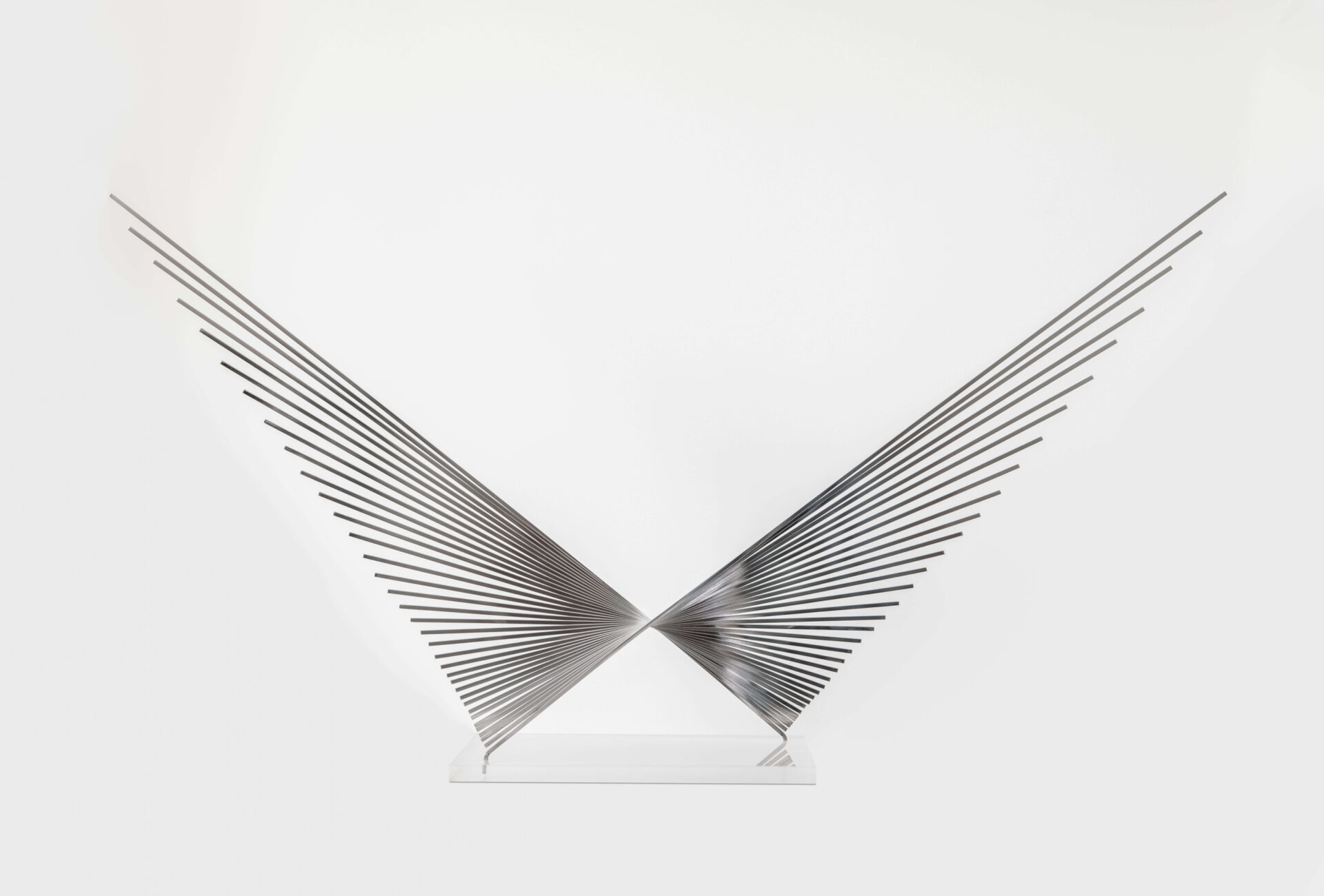Andreu Alfaro, a self-taught artist, is considered one of the outstanding Valencian sculptors of the second half of the twentieth century. His first show, held at Sala Mateu in Valencia in 1957, consisted of a series of line drawings made without lifting the pencil from the paper. It was very well received by the critics and boosted his incipient career.
A visit to the exhibition 50 ans d’art moderne in Brussels, held as part of the 1958 World Fair, brought about a radical change in his artistic practice. He was dazzled by the works of sculptors like Umberto Boccioni, Constantin Brancusi, Julio González and Naum Gabo. Meeting Oteiza and joining the Parpalló Group that same year definitively confirmed his desire to become a sculptor.
Alfaro then began to make simple sculptures, composed of metal rods and sheets of brass. As he himself explains: “My move into sculpture was a problem of space, using the word ‘space’ in its most common meaning, which everyone understands: space in the sense of capacity. The stuff I do overflows the bounds of a picture, a plane. I need more room and I have no alternative: I overflow, I go for space. The media have to change; pencils, brushes and colours are no use to me any more; I start using pieces of wire and the tin from cans: whatever is closest to hand1”.
At the end of the 1960s his style changed direction with the emergence of a new type of sculpture made with juxtaposed metal rods that created an impression of movement, known as Generatrices y tramas. Alfaro transferred this technique to the field of public sculpture, and thus we can see examples of them in Viveros Park and the Avenida de Aragón, both in Valencia, and in other towns and cities such as Tárrega, Andorra and Frankfurt.
Jazz made an appearance during the final stage of his career in a series of small-scale works in brass, painted black and white or simply polished, in which he reproduces the shapes of the instruments most typical of this type of music. This same period also saw the emergence of a series called Cercles, in 1997, featuring circles produced in weathering steel in which he made various perforations, in the form of dots, rectangles or sinuous shapes.
Andreu Alfaro was one of the first artists whose work Hortensia Herrero began to collect when she came into contact with it through the exhibitions devoted to him in various galleries in the city of Valencia, such as that of Rosalía Sender. The Hortensia Herrero collection contains good examples of Andreu Alfaro’s various styles, such as the Generatrices and the Cercles he produced at the end of his career.
